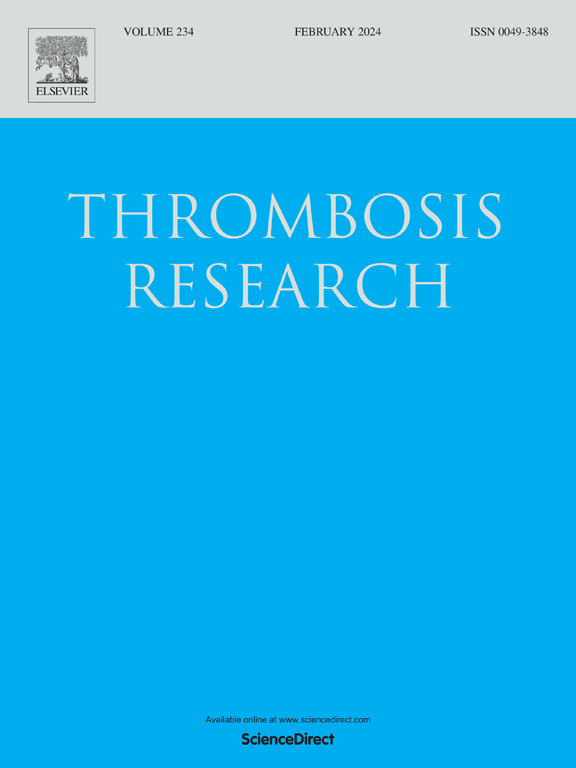Association between anticoagulant-related bleeding and mortality in patients with hematological malignancies and cancer-associated venous thromboembolism
IF 3.7
3区 医学
Q1 HEMATOLOGY
引用次数: 0
Abstract
Introduction
Patients with hematological malignancies are at an increased risk of severe bleeding. Anticoagulant (AC) therapy further increases this risk. Mortality after these bleeds is unclear and may differ by bleeding site.
Aim
To evaluate the association between bleeding and mortality in patients with hematological malignancies prescribed AC therapy for cancer-associated venous thromboembolism (VTE).
Methods
In a nationwide cohort of US Veterans (2012−2020), we identified patients with hematological malignancies and cancer-associated VTE prescribed AC therapy. Bleeding events were identified by a previously validated algorithm using hospitalization International Classification of Disease (ICD) codes. Within 12 months of AC therapy initiation, we evaluated the association between bleeding and mortality using multivariate Cox regression models, with AC-related bleeding analyzed as a time-varying covariate.
Results
The cohort included 1825 patients. Within 12 months of starting AC therapy, 123 (6.7 %) had bleeding events and 162 (8.9 %) patients died. Patients with bleeding events were more likely to have anemia, history of bleeding, aspirin use, chemotherapy use, and frailty. A multivariable Cox proportional-hazard model showed that AC-related bleeding was associated with tripled mortality rate (aHR 3.26, 95 % CI 1.96–5.45). When stratified by bleeding site, intracranial bleeding was associated with the highest risk of death (aHR 13.41, 95 % CI 4.13–43.48), followed by gastrointestinal bleeding (aHR 4.55, 95 % CI 2.48–8.35).
Conclusion
In this cohort of patients with hematological malignancies and newly diagnosed VTE initiated on AC therapy, bleeding was associated with an increased risk of mortality within 12 months. Association was highest with intracranial and gastrointestinal bleeding.
求助全文
约1分钟内获得全文
求助全文
来源期刊

Thrombosis research
医学-外周血管病
CiteScore
14.60
自引率
4.00%
发文量
364
审稿时长
31 days
期刊介绍:
Thrombosis Research is an international journal dedicated to the swift dissemination of new information on thrombosis, hemostasis, and vascular biology, aimed at advancing both science and clinical care. The journal publishes peer-reviewed original research, reviews, editorials, opinions, and critiques, covering both basic and clinical studies. Priority is given to research that promises novel approaches in the diagnosis, therapy, prognosis, and prevention of thrombotic and hemorrhagic diseases.
 求助内容:
求助内容: 应助结果提醒方式:
应助结果提醒方式:


